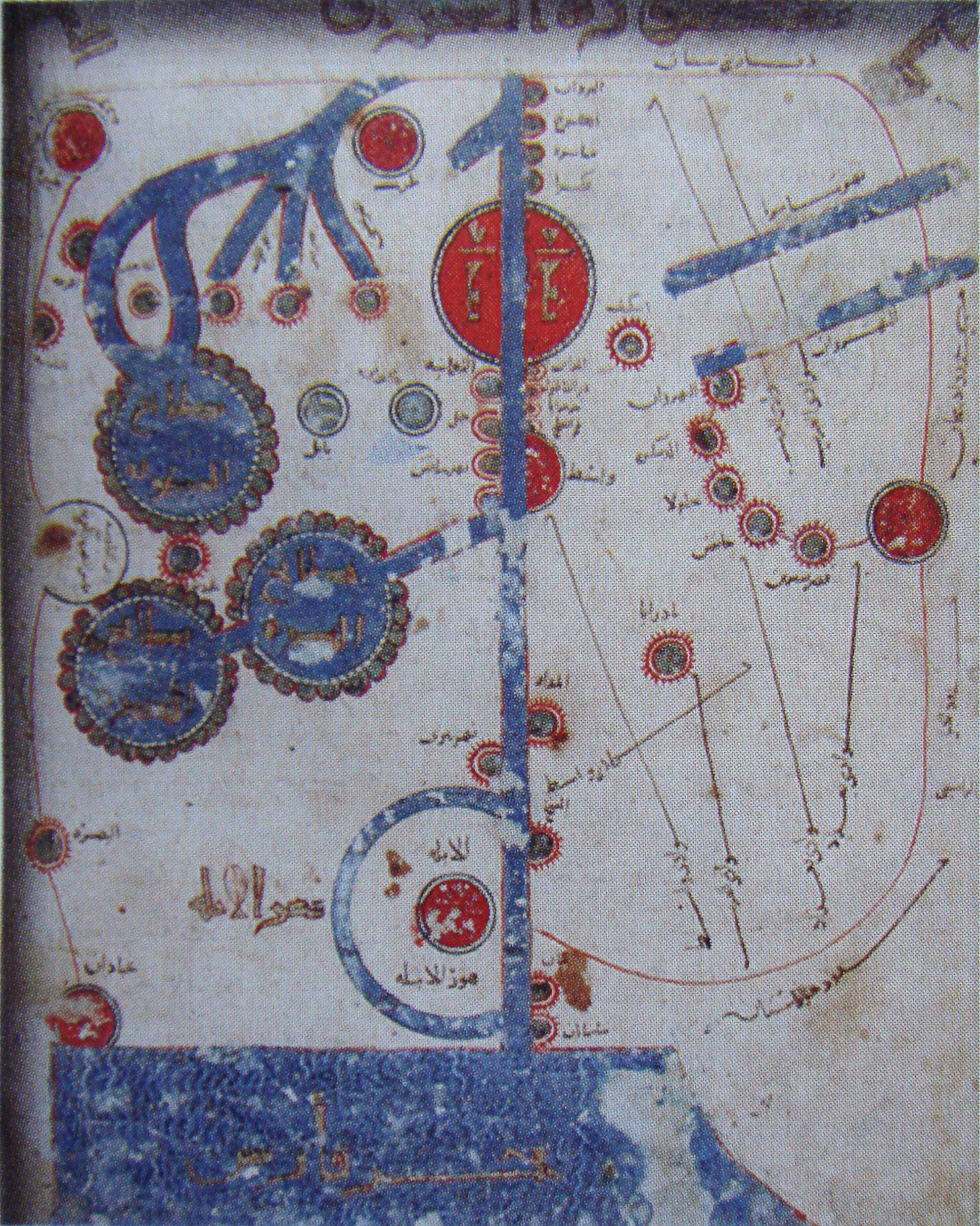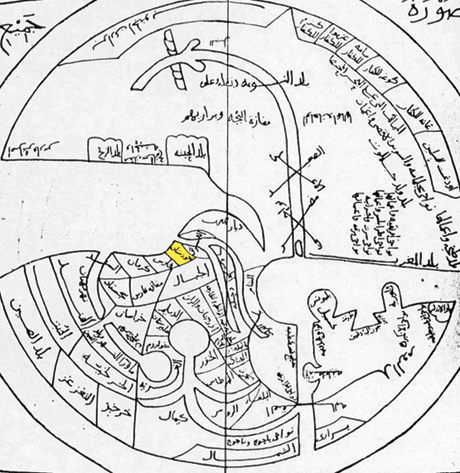|
Fraxinetum
Fraxinetum or Fraxinet ( ar, فرخشنيط, translit=Farakhshanīt or , from Latin ''fraxinus'': "ash tree", ''fraxinetum'': "ash forest") was the site of a Muslim fortress in Provence between about 887 and 972. It is identified with modern La Garde-Freinet, near Saint-Tropez. From this base, the Muslims raided up the Rhône Valley and into Piedmont. For a time, they controlled the passes through the western Alps. They withstood several attempts to oust them, but were finally defeated by the combined forces of the Provençal and Piedmontese nobility. Primary sources Christian sources in Latin are more numerous than Muslim ones in Arabic for reconstructing the history of Fraxinetum. The most important contemporary narrative of the Muslims of Fraxinetum is the ''Antapodosis'' of Liudprand, bishop of Cremona (d. 972). The bishop also mentions Fraxinetum in his ''Liber de rebus gestis Ottonis'', an account of the reign of King Otto I of Germany. Other contemporary narrat ... [...More Info...] [...Related Items...] OR: [Wikipedia] [Google] [Baidu] |
Vita Sancti Bobonis
Saint Bobo of Provence (french: italic=yes, Beuvon or ''Bobon'', it, italic=yes, Bovo or ''Bobone''; died 986) was a Frankish warrior and pilgrim from Noyers (''Noghiers''). He is known only from the anonymous biography ''Vita sancti Bobonis''. He built a castle on a hill opposite the Muslim fortress of Fraxinet and led the Christians of Provence to victory in battle with the Muslims in an unknown year. During the battle he had a mystical experience and vowed, if victorious, to renounce war and become a pilgrim devoted to the care of orphans and widows. After the loss of his brother, he went on pilgrimage to Rome and died at Voghera in Lombardy. Bobo is venerated as a saint in the Eastern Orthodox and Roman Catholic churches. His feast day is May 22 and he is the patron saint A patron saint, patroness saint, patron hallow or heavenly protector is a saint who in Catholicism, Anglicanism, or Eastern Orthodoxy is regarded as the heavenly advocate of a nation, place, craft, ... [...More Info...] [...Related Items...] OR: [Wikipedia] [Google] [Baidu] |
Latin Language
Latin (, or , ) is a classical language belonging to the Italic languages, Italic branch of the Indo-European languages. Latin was originally a dialect spoken in the lower Tiber area (then known as Latium) around present-day Rome, but through the power of the Roman Republic it became the dominant language in the Italy (geographical region), Italian region and subsequently throughout the Roman Empire. Even after the Fall of the Western Roman Empire, fall of Western Rome, Latin remained the common language of international communication, science, scholarship and academia in Europe until well into the 18th century, when other regional vernaculars (including its own descendants, the Romance languages) supplanted it in common academic and political usage, and it eventually became a dead language in the modern linguistic definition. Latin is a fusional language, highly inflected language, with three distinct grammatical gender, genders (masculine, feminine, and neuter), six or seven ... [...More Info...] [...Related Items...] OR: [Wikipedia] [Google] [Baidu] |
Cartulary
A cartulary or chartulary (; Latin: ''cartularium'' or ''chartularium''), also called ''pancarta'' or ''codex diplomaticus'', is a medieval manuscript volume or roll (''rotulus'') containing transcriptions of original documents relating to the foundation, privileges, and legal rights of ecclesiastical establishments, municipal corporations, industrial associations, institutions of learning, or families. The term is sometimes also applied to collections of original documents bound in one volume or attached to one another so as to form a roll, as well as to custodians of such collections. Definitions Michael Clanchy defines a cartulary as "a collection of title deeds copied into a register for greater security". A cartulary may take the form of a book or a ''codex''. Documents, chronicles or other kinds of handwritten texts were compiled, transcribed or copied into the cartulary. In the introduction to the book ''Les Cartulaires'', it is argued that in the contemporary diplomatic ... [...More Info...] [...Related Items...] OR: [Wikipedia] [Google] [Baidu] |
Ibn Ḥayyān
Abū Marwān Ḥayyān ibn Khalaf ibn Ḥusayn ibn Ḥayyān al-Qurṭubī () (987–1075), usually known as Ibn Hayyan, was a Muslim historian from Al-Andalus. Born at Córdoba, his father was an important official at the court of the Andalusian ruler al-Mansur and published several works on history which have only survived in part. His books constitute one of the most important sources for the study of the Andalusian history, especially the history of Córdoba and the kings of the taifas. His work also provides an early reference to Viking raiders, called ''Majus'' by him. Like Ibn Hazm he defended the dynasty of the Umayyads and deplored its fall and the following dissolution of the Andalusian state and the coming of the ''taifas The ''taifas'' (singular ''taifa'', from ar, طائفة ''ṭā'ifa'', plural طوائف ''ṭawā'if'', a party, band or faction) were the independent Muslim principalities and kingdoms of the Iberian Peninsula (modern Portugal and Spain), ... [...More Info...] [...Related Items...] OR: [Wikipedia] [Google] [Baidu] |
New Persian
New Persian ( fa, فارسی نو), also known as Modern Persian () and Dari (), is the current stage of the Persian language spoken since the 8th to 9th centuries until now in Greater Iran and surroundings. It is conventionally divided into three stages: Early New Persian (8th/9th centuries), Classical Persian (10th–18th centuries), and Contemporary Persian (19th century to present). Dari is a name given to the New Persian language since the 10th century, widely used in Arabic (compare Al-Estakhri, Al-Muqaddasi and Ibn Hawqal) and Persian texts. Since 1964, it has been the official name in Afghanistan for the Persian spoken there. Classification New Persian is a member of the Western Iranian group of the Iranian languages, which make up a branch of the Indo-European languages in their Indo-Iranian subdivision. The Western Iranian languages themselves are divided into two subgroups: Southwestern Iranian languages, of which Persian is the most widely spoken, and Northweste ... [...More Info...] [...Related Items...] OR: [Wikipedia] [Google] [Baidu] |
Shaʿyā Ibn Farīghūn
Shaʿyā ibn Farīghūn ( ar, شعيا بن فريغون) was a Muslim writer active in the Emirate of Čaghāniyān in the 10th century. He wrote a short but comprehensive encyclopaedia in Arabic entitled ''Jawāmiʿ al-ʿulūm'' ("Connections of the Sciences"), which he dedicated to the Muḥtājid emir Abū ʿAlī Aḥmad ibn Muḥammad ibn al-Muẓaffar, who died in 955. He may also have written the '' Ḥodud al-ʿālam'' ("Limits of the World"), a geographical text in Persian. Life Ibn Farīghūn is not mentioned in any of the numerous extant Arabic bio-bibliographical dictionaries. Shaʿyā is the Arabic form of Isaiah. The patronymic Ibn Farīghūn suggests a connection to the Farīghūnids who ruled Gūzgān to the south of Čaghāniyān as vassals of the Sāmānids. This northeastern Iranian dynasty probably took its name from the earlier Afrīghids. There is, however, some uncertainty surrounding the reading of the name of the author of the ''Jawāmiʿ''. Fuat Se ... [...More Info...] [...Related Items...] OR: [Wikipedia] [Google] [Baidu] |
Al-Iṣṭakhrī
Abu Ishaq Ibrahim ibn Muhammad al-Farisi al-Istakhri () (also ''Estakhri'', fa, استخری, i.e. from the Iranian city of Istakhr, b. - d. 346 AH/AD 957) was a 10th-century travel-author and geographer who wrote valuable accounts in Arabic of the many Muslim territories he visited during the Abbasid era of the Islamic Golden Age. There is no consensus regarding his origin. Some sources describe him as Persian, while others state he was Arab. IV:222b-223b. The ''Encyclopedia Iranica'' states: "Biographical data are very meager. From his ''nesbas'' (attributive names) he appears to have been a native of Eṣṭaḵr in Fārs, but it is not known whether he was Persian". VIII(6):646-647 (I have used the updated online version). Istakhri's account of windmills is the earliest known. Istakhri met the celebrated traveller-geographer Ibn Hawqal, while travelling, and Ibn Hawqal incorporated the work of Istakhri in his book ''Kitab al-Surat al-Ard''. Works Istakhri's two surviv ... [...More Info...] [...Related Items...] OR: [Wikipedia] [Google] [Baidu] |
Ibn Ḥawqal
Muḥammad Abū’l-Qāsim Ibn Ḥawqal (), also known as Abū al-Qāsim b. ʻAlī Ibn Ḥawqal al-Naṣībī, born in Nisibis, Upper Mesopotamia; was a 10th-century Arab Muslim writer, geographer, and chronicler who travelled during the years 943 to 969 AD.Ludwig W. Adamec (2009), ''Historical Dictionary of Islam'', p.137. Scarecrow Press. . His famous work, written in 977 AD, is called (; "The face of the Earth"). The date of his death, known from his writings, was after 368 AH/978 AD. Biography Details known of Ibn Hawqal's life are extrapolated from his book. He spent the last 30 years of his life traveling to remote parts of Asia and Africa and writing about what he saw. One journey brought him 20° south of the equator along the East African coast where he discovered large populations in regions the ancient Greek writers had deemed, from logic rather than knowledge, were uninhabitable. Ṣūrat al-’Arḍ Ibn Hawqal based his great work of geography on a revision ... [...More Info...] [...Related Items...] OR: [Wikipedia] [Google] [Baidu] |
Chronicon Novalicense
The ''Chronicon Novaliciense'' (or ''Chronicle of Novalesa'') is a monastic chronicle which was written in the mid-eleventh century in the valley of Susa. The ''Chronicle of Novalesa'' was written, c.1050, by an anonymous monk at the monastery of San Pietro in Novalesa. The ''Chronicon'' was written in the form of a rotulus (or scroll) rather than a codex. The original, and sole extant copy, of the scroll is preserved in Turin (Archivio di Stato, Nuova collezione, "museo"). The scroll consists of twenty-eight pieces of parchment sewn together, of which fragments are now missing. The work is divided into five sections, plus an appendix; of which sections four and five are incomplete. The ''Chronicon'' relates the story of monastery of Novalesa from its foundation, by the patrician Abbo in 726, up to the mid-eleventh century. Its main purpose was to emphasise the connection between the revived eleventh-century community at Novalesa and the earlier community of monks, who had been ... [...More Info...] [...Related Items...] OR: [Wikipedia] [Google] [Baidu] |
Odilo Of Cluny
Odilo of Cluny (c. 962 – 1 January 1049) was the fifth Benedictine Abbot of Cluny, holding the post for around 54 years. During his tenure Cluny became the most important monastery in western Europe. Odilo actively worked to reform the monastic practices not only at Cluny, but at other Benedictine houses. He also promoted the Truce of God whereby military hostilities were temporarily suspended at certain times for ostensibly religious reasons. Odilo encouraged the formal practice of personal consecration to Mary. He established All Souls' Day (on 2 November) in Cluny and its monasteries as the annual commemoration to pray for all the faithful departed. The practice was soon adopted throughout the whole Western church. Early life Odilo was descended from an illustrious noble family of Auvergne (central France). The son of Berald de Mercoeur and Gerberga, his widowed mother became a nun at the convent of St. John in Autun after his father's death. Odilo had eight brothers and two si ... [...More Info...] [...Related Items...] OR: [Wikipedia] [Google] [Baidu] |



